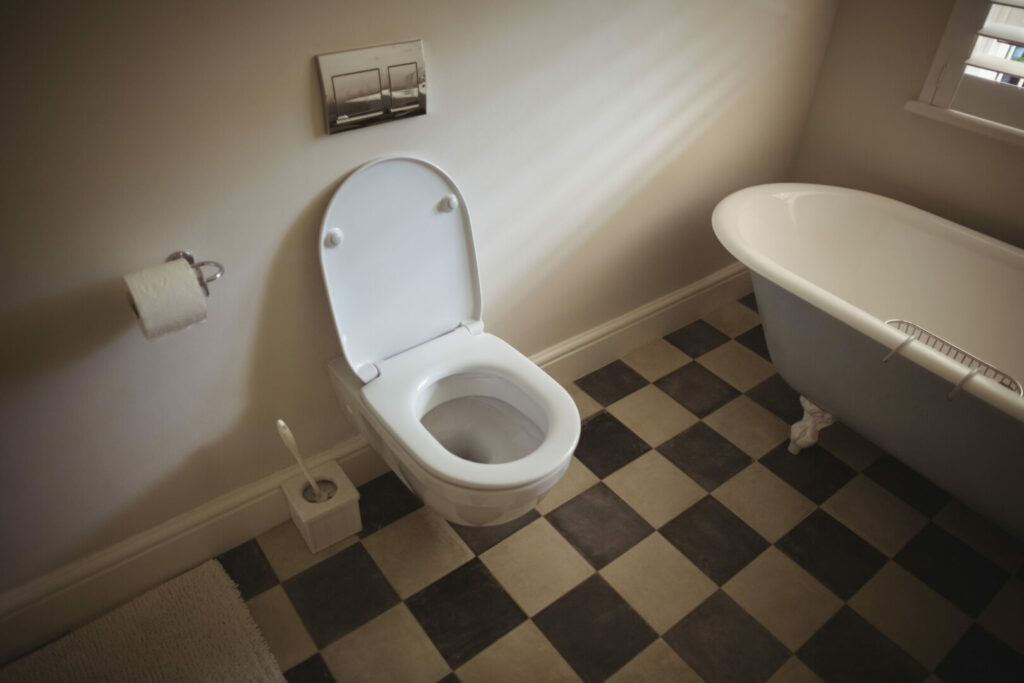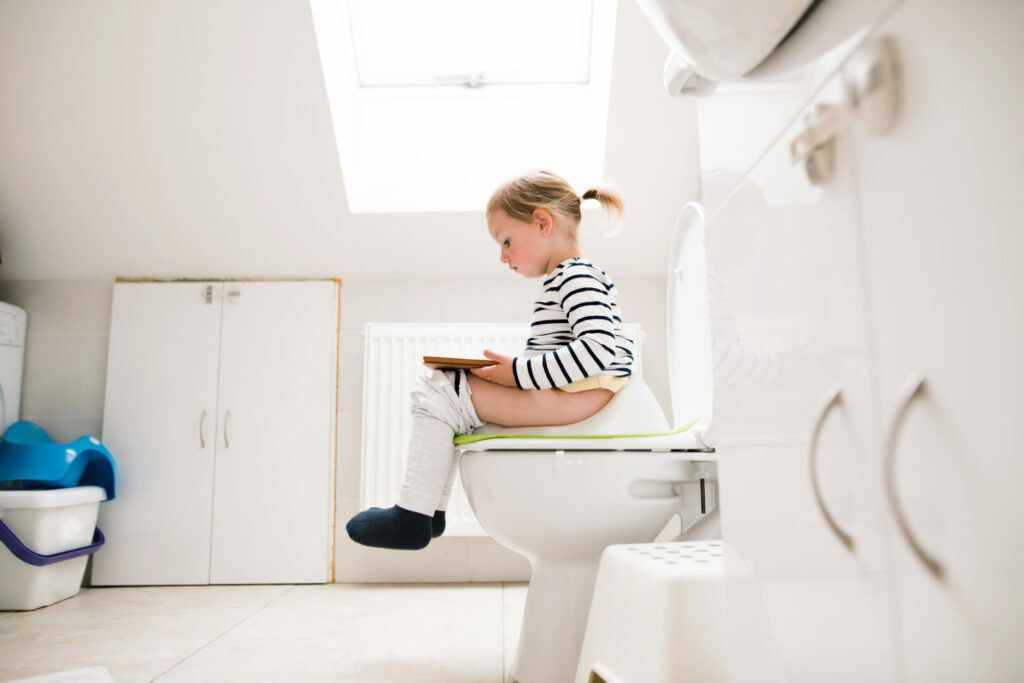Table of Contents Show
You can easily walk through a couple of dozen homes when shopping for a house before you find just the right one. This can allow you to see how home construction has changed over the years.
You can see how some features that were once normal in homes may seem a bit out of place today. For example, there’s the Pittsburgh toilet found in some homes in Pennsylvania.
What’s the fuss about with these oddly placed toilets? How did they get the name Pittsburgh toilets? Let’s take a closer look and see!
What Is the Pittsburgh Toilet?
A Pittsburgh toilet is a precarious toilet you’ll find in some homes made before World War II. It’s typically located in the basement of a home. However, while a standard bathroom would offer some privacy, these toilets don’t have walls and provide minimal amounts of privacy.
Some of these toilets will come with a sink or a simple showering area. Luckily, this was not a trend that caught on, and we now have bathrooms that offer a bit more privacy.
What’s the Purpose of a Pittsburgh Toilet?
Pittsburgh toilets appear to serve various purposes. If you didn’t know, Pittsburgh has historically played a significant role in the steel industry. It’s such a large player in the game that it has the nickname “Steel City.”
Working with steel is a dirty job, and workers often came home from their long shifts at the local steel mill covered from head to toe in dust and soot. To avoid tracking their mess through their clean house, workers would head straight downstairs when they got home to use the restroom and clean themselves up.
This kept any mess the workers happened to bring home with them from work in the basement. Happy wife, happy life. Right? However, that’s not the only possible purpose of these toilets. Despite their name, they’re in other locations outside of Pittsburgh.
While homes in the Steel City may have earned the reputation for having these unique toilets, it wasn’t because steel workers wanted to keep their wives happy. Many believe the unique location of the toilets helped avoid messes from the city’s sewer system.
Since the toilet was the lowest possible drain in the sewer system, any backups in the sewer lines would create a mess in the basement instead of the house.
Keep in Mind: If you have to use a vault toilet while hiking, make sure to avoid making these 5 Mistakes People!

Why Are the Toilets in the Basement in Pittsburgh?
Despite what you may hear, the “Pittsburgh toilet” likely has nothing to do with the steel industry. In an interview, William Martin, chairman of the Historic Preservation Committee, said that you could find toilets in basements dating back to the early 1900s.
He shares that these older homes were built in a day and age when the sewer systems were, to put it nicely, less than reliable.
Some sewer systems would back up and cause homes to overflow with sewage at the lowest possible point. Instead of having raw sewage spilling into the living space, these bathrooms would often serve as a safety valve of sorts for homeowners.
It was much easier to clean the cement of an unfinished basement than a kitchen or bathroom in your actual living space.
So did steel workers take advantage of these spaces to clean up before spending time with their families? Absolutely. Were these bathrooms specifically installed for steel workers? Likely not. However, they were most likely still beneficial for them.
Why Do Houses in Pennsylvania Have Basements?
Some of the oldest homes in the United States are along the east coast, including in Pennsylvania.
Many of these homes required basements for storing fuel sources that they would use for heating back in the late 1700s and early 1800s. However, that’s not the only reason why you’ll frequently see homes with basements in this part of the country.
Another explanation has to do with the frost line. Builders must build a foundation below the frost line, which could be nearly 4 feet below the surface in some parts of the midwest and northeast.
As a result, builders will continue to dig until they have enough space usable for building construction. Homeowners can use basement spaces for storage or as additional living space.
Keep in Mind: Can You Put a Porcelain Toilet in an RV? Let’s find out!

Why Do Old Homes Only Have One Bathroom?
While modern home buyers are looking for homes with multiple bathrooms, that hasn’t always been the case. Many homes before 1900 had multiple bedrooms but no bathrooms.
That’s because indoor plumbing wasn’t a standard feature in many homes. People would use chamber pots or outdoor pits when they needed to use the restroom.
Additionally, it wasn’t affordable for most homeowners, even in areas where indoor plumbing and running water were available. It wasn’t until the 1930s that indoor plumbing and running water began to catch on.
However, it took several decades for advancements in technology and development before running water and indoor plumbing was efficient and sanitary.
Do New Homes in Pittsburgh Put Toilets in the Basement?
Thanks to modern advancements, there’s no longer a need to put a toilet in the basement to avoid flooding your home with sewage.
On the other hand, if you’re building a home and feel that a toilet or bathroom space in the basement could be convenient, there’s nothing stopping you. You can construct our new home to work for you and your unique needs.
However, may we suggest not putting the toilet in the middle of the room?






